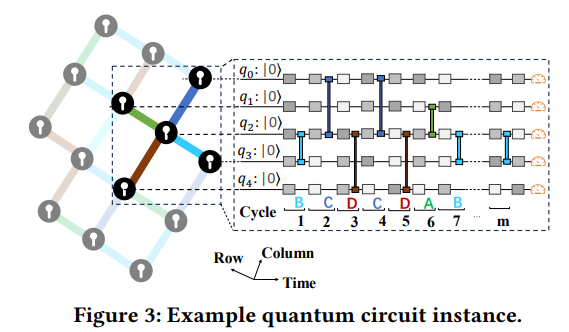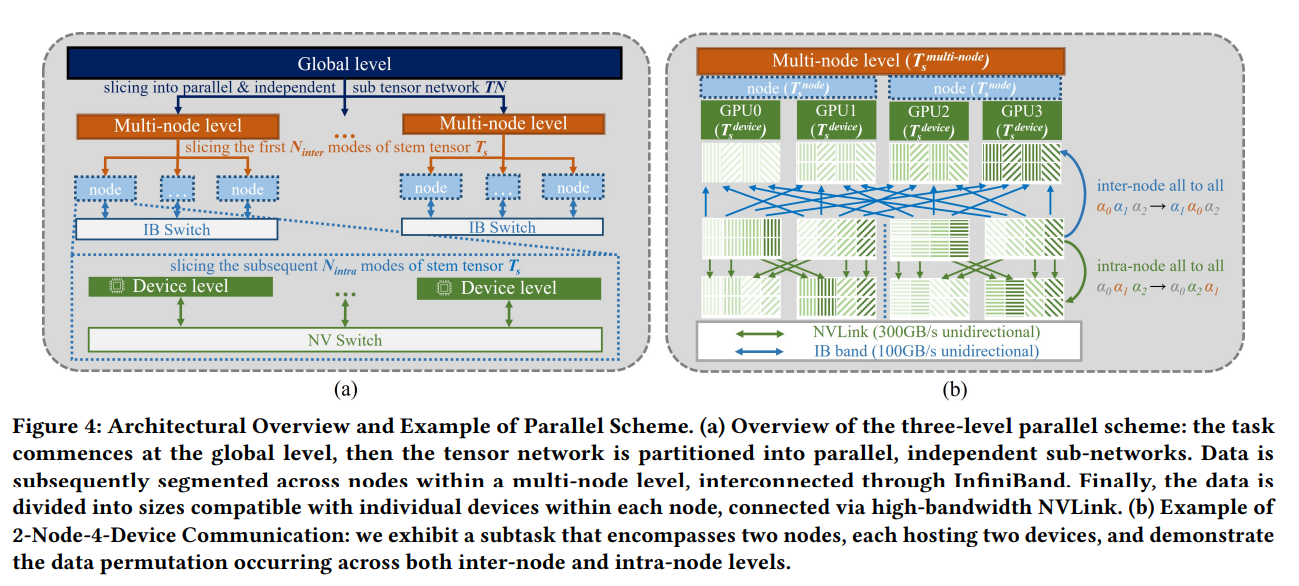Achieving Energetic Superiority Through System-Level Quantum Circuit Simulation
2024-06-30 17:50
1101 浏览
Quantum Computational Superiority boasts rapid computation and
high energy efficiency. Despite recent advances in classical algorithms aimed at refuting the milestone claim of Google’s sycamore,
challenges remain in generating uncorrelated samples of random
quantum circuits.




In this paper, we present a groundbreaking large-scale system
technology that leverages optimization on global, node, and device
levels to achieve unprecedented scalability for tensor networks.
This enables the handling of large-scale tensor networks with memory capacities reaching tens of terabytes, surpassing memory space
constraints on a single node. Our techniques enable accommodating large-scale tensor networks with up to tens of terabytes of
memory, reaching up to 2304 GPUs with a peak computing power
of 561 PFLOPS half-precision. Notably, we have achieved a timeto-solution of 14.22 seconds with energy consumption of 2.39 kWh
which achieved fidelity of 0.002 and our most remarkable result is a
time-to-solution of 17.18 seconds, with energy consumption of only
0.29 kWh which achieved a XEB of 0.002 after post-processing, outperforming Google’s quantum processor Sycamore in both speed
and energy efficiency, which recorded 600 seconds and 4.3 kWh,
respectively.




Article:https://arxiv.org/abs/2407.00769
